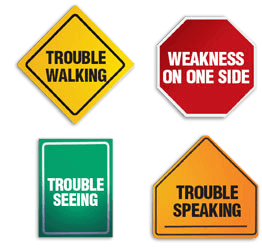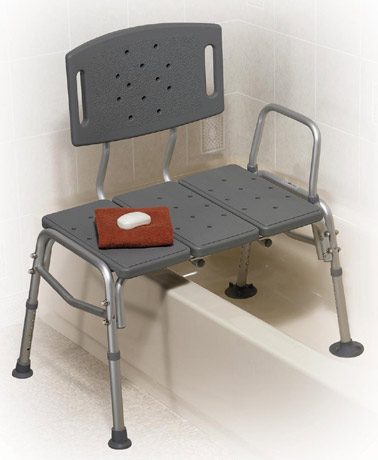Please choose a body region on the right for you to pin point the problem area of your body.

Shop by Condition

Shop by Brand
 A stroke is a disease that afflicts the arteries within the brain and those leading to it. Depending on the cause of stroke, it can be classified into hemorrhagic stroke or ischemic stroke. A hemorrhagic stroke occurs when a weak blood vessel leaks and prevents adequate blood flow to the brain. An ischemic stroke is caused when a blood clot blocks a blood vessel carrying blood to the brain.
A stroke is a disease that afflicts the arteries within the brain and those leading to it. Depending on the cause of stroke, it can be classified into hemorrhagic stroke or ischemic stroke. A hemorrhagic stroke occurs when a weak blood vessel leaks and prevents adequate blood flow to the brain. An ischemic stroke is caused when a blood clot blocks a blood vessel carrying blood to the brain.
A temporary clot that obstructs blood flow to the brain for a brief period of time can cause a transient ischemic attack (TIA). It can persist for up to 24 hours before disappearing. Also called a mini stroke, a TIA is a warning signal that you may experience a stroke in the near future. In a majority of the cases, people who've experienced a TIA have a stroke within a year.
Key facts about stroke
According to the Centers for Disease Control and Prevention,
Risks and symptoms
The major risk factors for stroke include high cholesterol, high blood pressure and smoking. Healthy lifestyle choices can greatly reduce your risk for stroke. They include maintaining a healthy weight, not smoking, exercising regularly, eating a healthy diet, and limiting alcohol consumption.
Stroke is associated with the following symptoms:
Recovery time and success after a stroke vary from case to case. The most immediate concern, is of course, returning to daily activities following a stroke. Besides long-term care, stroke rehabilitation can take many forms, such as physical activities and technology-assisted activities to cognitive activities and experimental therapies.
Activities of Daily Living (ADL)
Activities of daily living (ADL) basically describe activities that we engage in on a daily basis, at home, at work, at school/college, or when at leisure. After a stroke, patients will not be able to get back to complex activities, but it is possible that they may struggle to return to routine activities of self-care, including bathing, eating and dressing.
Here's where the assistance of a caregiver can be invaluable. In quite a few cases, a family member may assume responsibilities of a caregiver. But, mostly, family members of the patient rely on the services of a professional caregiver because caring for a stroke survivor is hard work and technique-oriented, depending on the severity of stroke. In-home care for stroke patients can be full-time or delivered a couple of hours per week.
Caregivers may be hired temporarily as the patient recovers or provide their service on a long-term basis for patients whose recovery is expected to continue over a longer period of time. In-home care is often advised for patients who haven't regained their full range of abilities. A caregiver can help the patient in the following ways:
A trained caregiver knows how to motivate patients to stick to their rehabilitation program while creating an environment of dignity, safety and comfort. The caregiver becomes the patient's confidante and friend, and therefore his/her intervention is extremely useful in aiding successful recovery.
|
|
Stroke patients often face difficulties with self-feeding. An excellent way to facilitate independent self-feeding is through the use of adaptive dining products. Such aids to daily living can include specially designed cutlery for easy and convenient eating. Some of these tools that make mealtimes less frustrating and more enjoyable are:
Bathroom safety is also critical for stroke patients. Without proper care and supervision, patients can slip and fall on hard tile floors, suffering injuries in the process. Some bathroom aids for daily living that are worth the investment include hinged elevated toilet seats, adjustable shower seats with a back and armrests, rotating shower stool and locking elevated toilet seats.
|
|
| |
|
Related Articles
< Unintentional Death From Bed Falls
Get $10 off your next order when you sign up to receive our email newsletter.*
Simply enter your email address below!
*Minimum order value of $100. Valid email address to qualify.











